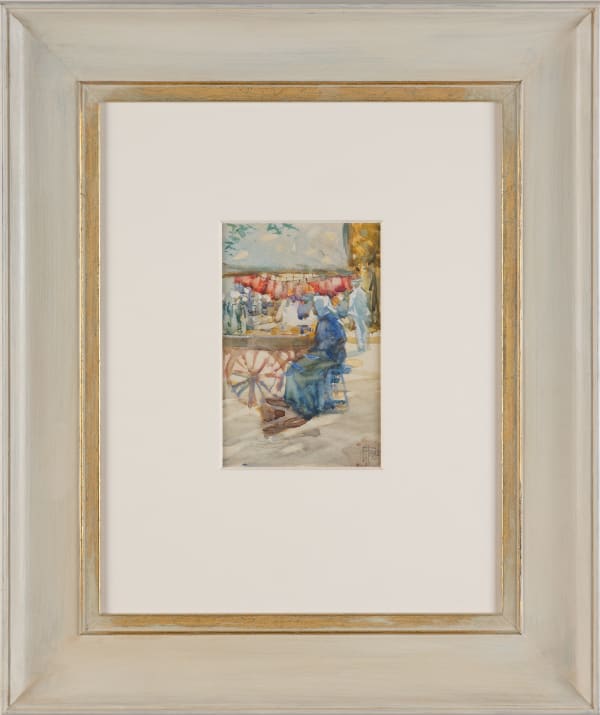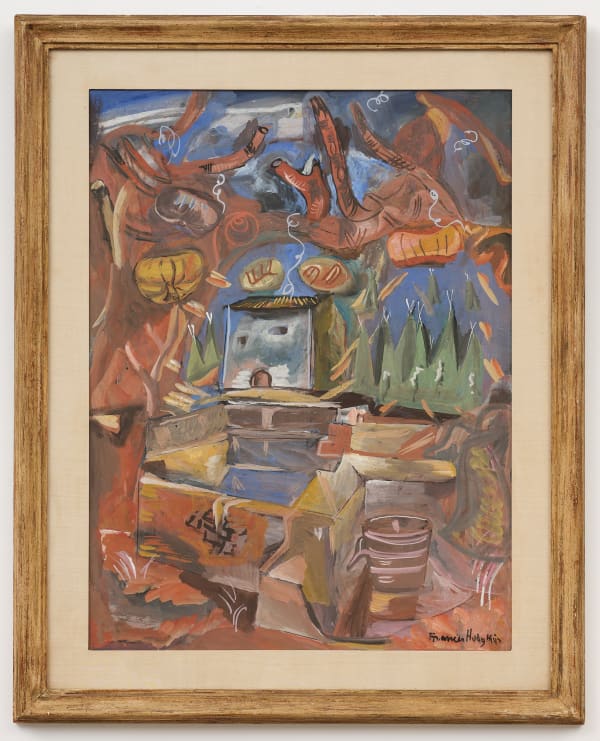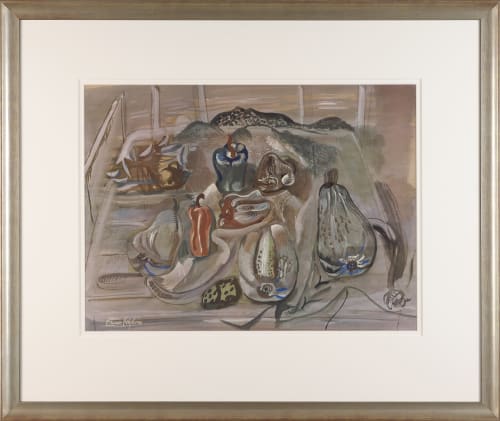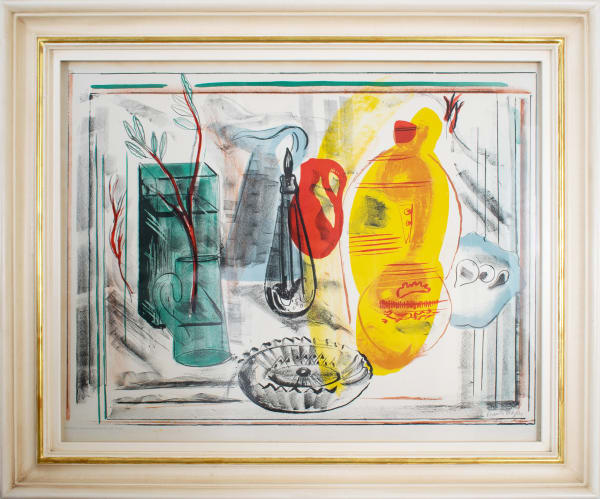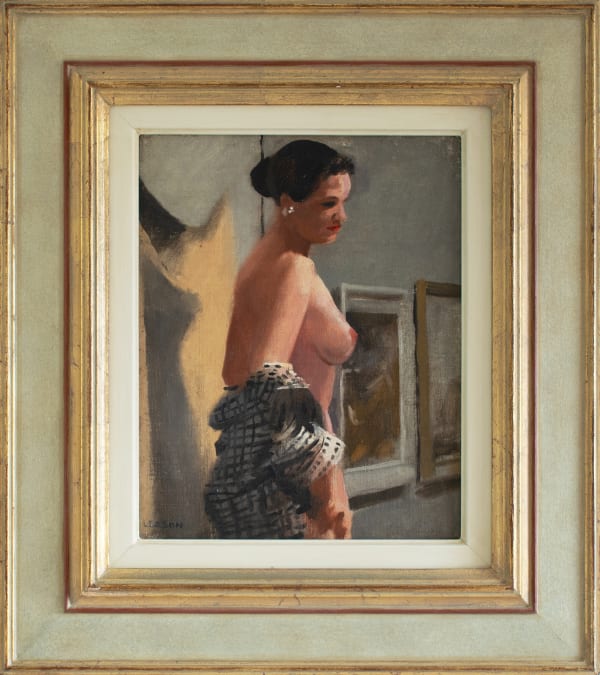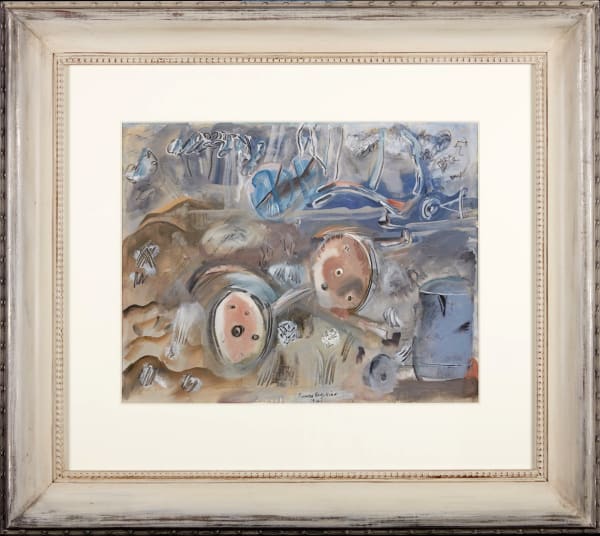Frances Mary Hodgkins New Zealand, 1869-1947
Works
-
 Frances Mary HodgkinsPumpkins, 1952Collotype52 x 70 cmPublished by Ganymed, 1952
Frances Mary HodgkinsPumpkins, 1952Collotype52 x 70 cmPublished by Ganymed, 1952
Illustrated Ganymed Facsimiles, London, April 1950. p.18
-
 Frances Mary HodgkinsTerrace Garden, Ibiza 1933Watercolour54 x 39 cmSigned 'Frances Hodgkins' lower right
Frances Mary HodgkinsTerrace Garden, Ibiza 1933Watercolour54 x 39 cmSigned 'Frances Hodgkins' lower right -
 Frances Mary HodgkinsThe Corner of the Woods, 1941Watercolour & gouache40 x 51.5 cmSigned Frances Hodgkins 1941 lower centre
Frances Mary HodgkinsThe Corner of the Woods, 1941Watercolour & gouache40 x 51.5 cmSigned Frances Hodgkins 1941 lower centre -
 Frances Mary HodgkinsThe Young Baker c. 1921Pencil on paper26 x 20 cmSigned Frances Hodgkins lower right
Frances Mary HodgkinsThe Young Baker c. 1921Pencil on paper26 x 20 cmSigned Frances Hodgkins lower right -
 Frances Mary HodgkinsGirl Seated on a Chair c.1927, 1927Gouache53 x 34 cmsigned Frances Hodgkins. Circa 1927
Frances Mary HodgkinsGirl Seated on a Chair c.1927, 1927Gouache53 x 34 cmsigned Frances Hodgkins. Circa 1927 -
 Frances Mary HodgkinsBridgnorth c. 1926, 1926Pencil, ink, watercolour & wash on card50 x 35.5 cmSigned Frances Hodgkins lower right c. 1926
Frances Mary HodgkinsBridgnorth c. 1926, 1926Pencil, ink, watercolour & wash on card50 x 35.5 cmSigned Frances Hodgkins lower right c. 1926 -
 Frances Mary HodgkinsA Street Market in Brittany 1902, 1902Watercolour17 x 12 cmSigned FH lower right, dated '02
Frances Mary HodgkinsA Street Market in Brittany 1902, 1902Watercolour17 x 12 cmSigned FH lower right, dated '02 -
 Frances Mary HodgkinsPergola, c.1936Gouache on paper72.3 x 53 cmSigned 'Frances Hodgkins' lower right
Frances Mary HodgkinsPergola, c.1936Gouache on paper72.3 x 53 cmSigned 'Frances Hodgkins' lower right -
 Frances Mary HodgkinsStorm (Ibiza) c. 1933Watercolour and gouache40 x 52 cmSigned 'Frances Hodgkins' lower right, Inscribed under mount 'Storm - Ibiza II'
Frances Mary HodgkinsStorm (Ibiza) c. 1933Watercolour and gouache40 x 52 cmSigned 'Frances Hodgkins' lower right, Inscribed under mount 'Storm - Ibiza II'
Biography
Frances Mary Hodgkins is regarded as one of New Zealand’s most renowned artists. Her works capture the spirit of an era greatly influenced by Impressionism and the beginnings of en plein air painting, Post-Impressionism, Fauvism and two World Wars. With a professional life that spanned fifty-six years, Hodgkins was one of the foremost artists of her generation. During her time in Britain she became one of the leaders of the English avant-garde during the 1930s and 1940s, and was one of the first New Zealand-born artists to achieve such stature.
Born in Dunedin on the 28 April 1869 to the distinguished watercolourist William Mathew Hodgkins and his Australian wife, Rachel Owen Parker, Frances Hodgkins’s artistic education continued outside the sphere of influence of her family. In 1893 she studied with the renowned expatriate artist Girolamo Pieri Nerli, (1860 -1926) who encouraged her in portraiture and figure painting, and then from 1895-96 she attended Dunedin School of Art.
Having left New Zealand for Europe in 1901, Hodgkins finally settled in England in 1913, where she spent most of her time in London. She took it upon herself to further her career in Europe and Britain by holding regular exhibitions of her work and becoming one of the first female teachers at the prestigious Académie Colarossi in Paris. Hodgkins toured around Normandy and Picardy with her group of students, sketching in the villages of Concarneau, Le Havre and St Valery-sur-Somme. It was on these teaching trips that Hodgkins met and befriended some of her most loyal companions, one of the most significant of which was Jane Saunders. Hodgkins first met Saunders and her partner, Hannah Ritchie, in 1911 at Concarneau and friends such as this pair, continually supported her throughout her life. Saunders and Ritchie also collected a number of major works by Hodgkins.
Hodgkins continued to paint and teach and hold regular sketching classes in France until the outbreak of the First World War (1914 -1918). Hodgkins spent the war years based in St Ives, Cornwall, where fellow artists Cedric Morris and Arthur Lett Haines became her close friends. After the war Hodgkins continued her teaching practice as well as working fervently in order to be able to exhibit at the Salon d’Automne in Paris. In 1927 Hodgkins exhibited a work with the New English Art Club, where she caught the attention of the prominent London dealer Arthur Howell, who subsequently offered Hodgkins a contract. This in turn led to Hodgkins association with the Lefevre and Leicester Galleries – a professional relationship that was to last until the end of her life.
During the Second World War (1939 -1945) Hodgkins was in her 70’s and less resilient both physically and emotionally to the strains imposed by war. Consequently, she moved to a small studio at Bradford-on-Tone in Somerset where Geoffrey Gorer’s cottage was made available to her. Hodgkins continued to work ardently during this period and as a result she experienced the unexpected success of an exhibition held in 1940. This marked the turning point in Hodgkins career and from that time on her paintings were increasingly sought after. Following on from her success, Hodgkins was chosen in the spring of that year, to represent Britain at the Venice Biennale. Further accolades followed in 1942 when she was honored with a Civil List pension for her services to art and in 1944 when the Tate Britain bought one of her works. This was undoubtedly a highpoint in her career. In November 1946, to enthusiastic critical acclaim, the Lefevre Gallery held a retrospective exhibition of Hodgkins works. The exhibition included 64 paintings and 17 drawings ranging from 1902 to 1946 and the exhibition received a warm and positive response from the London press.
Today, Frances Mary Hodgkins is hailed as one of New Zealand’s most preeminent artists and her work is held in consistently high regard. Her works can be found in the permanent collections of most major New Zealand public galleries and in numerous British galleries including the Tate Britain, the Victoria & Albert Museum and The Manchester City Art Gallery.
Exhibitions
-

WINTER 2024
15 Jun - 7 Aug 2024Read more -

Figurative
15 May - 15 Jun 2024Read more -

Frances Hodgkins - A Personal Perspective
8 - 28 Nov 2022Four years in the making, the exhibition, Frances Hodgkins – A Personal Perspective , scheduled to open at Jonathan Grant Gallery in November 2022, will feature a collection of original...Read more -

Frances Hodgkins And Her Circle
12 Nov - 6 Dec 2020Three years in the making Frances Hodgkins and Her Circle is an exhibition that explores and celebrates the importance of community. At its core is an artist who had the...Read more -

Frances Hodgkins
A New Zealand Modernist 30 May - 24 Jun 2019Frances Mary Hodgkins (1869-1947) is regarded as one of New Zealand’s leading expatriate artists. Her works capture the spirit of an era greatly influenced by Impressionism and the beginnings of...Read more -

Frances Hodgkins
A Singular Artist 30 Jun - 14 Jul 2017A Singular Artist features twelve important paintings by Frances Hodgkins dating from 1899 to 1944. The works showcase the range of styles and techniques employed by the artist over the...Read more -

Frances Hodgkins - The Expatriate Years
29 Mar - 29 May 2012Frances Hodgkins is regarded as one of New Zealand’s most renowned artists. Her works capture the spirit of an era greatly influenced by Impressionism and the beginnings of en plein...Read more
Publications
-
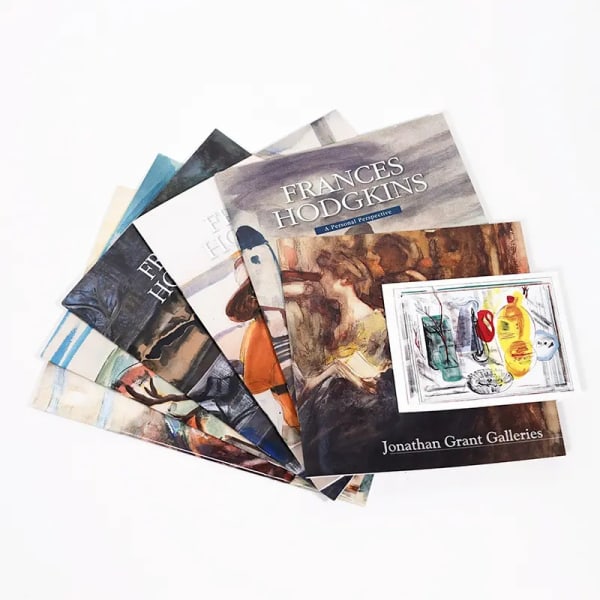
Frances Hodgkins Collection
Jonathan Grant GallerySoftbackRead more -
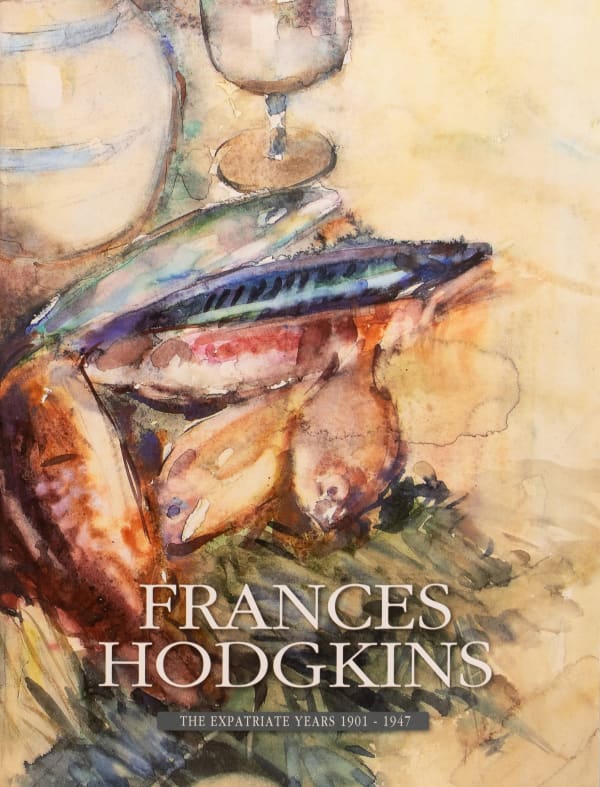
Frances Hodgkins: The Expatriate Years 1901 – 1947
Grace Alty & Jonathan Gooderham, 2012Softback, 20 pagesRead more
ISBN: 978-0-473-20889-9 -
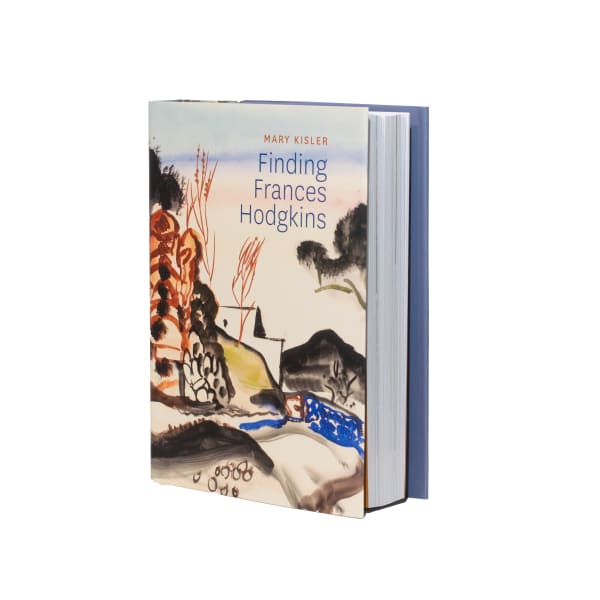
Finding Frances Hodgkins
Mary Kisler MNZM Mary Kisler MNZM, 2019Soft cover with slip case, 432 pagesRead more
ISBN: 9780995102972
Dimensions: 15 x 20.5 x 3.5cm -
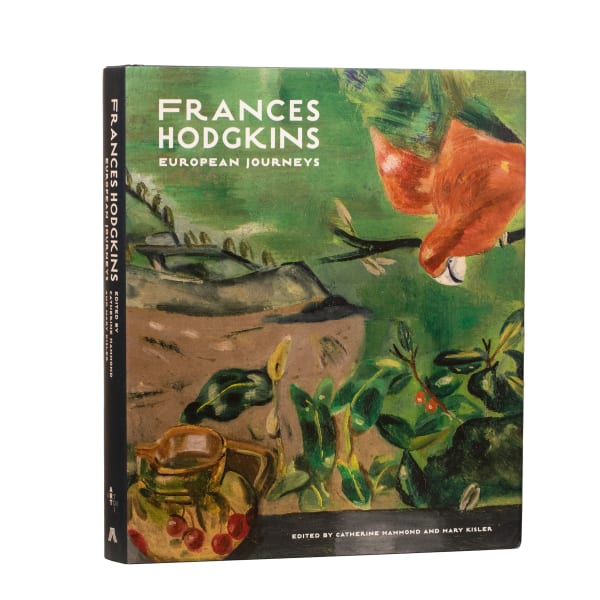
Frances Hodgkins: European Journeys
Catherine Hammond and Mary Kisler MNZM, 2019Hardback, 252 pagesRead more
Publisher: Auckland University Press, New Zealand
ISBN: 9781869408930
Dimensions: 23.5 x 28.5 x 2.6cm -
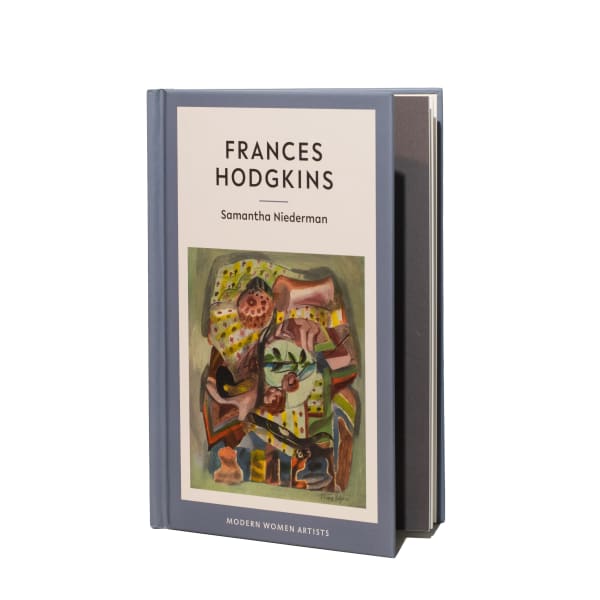
Modern Woman Artists: Frances Hodgkins
Samantha Niederman, 2019Hardback, 64 pagesRead more
Publisher: Eiderdown Books
ISBN: 978-1-9160416-1-5 -
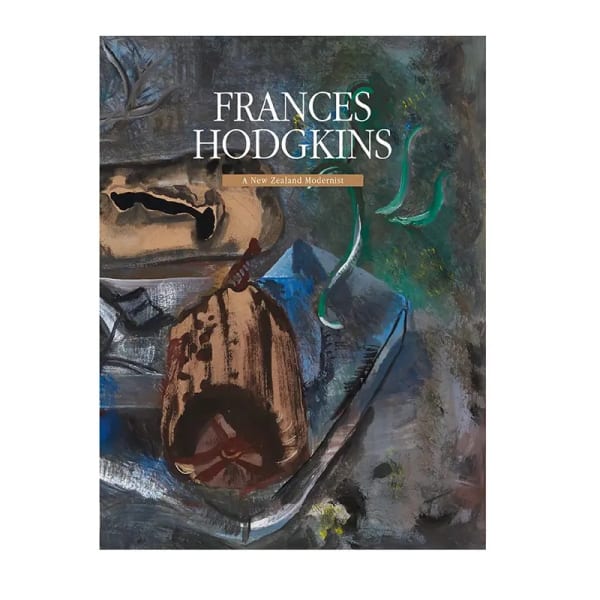
Frances Hodgkins: A New Zealand Modernist
Jonathan Gooderham & Richard Wolfe, 2019Softback, 20 pagesRead more
ISBN: 978-0-473-47908-4 -

Frances Hodgkins and Her Circle
Jonathan Gooderham & Grace Alty, 2020Softback, 42 pagesRead more
ISBN: 978-0-473-54841-4
Dimensions: 31 x 20 cm -
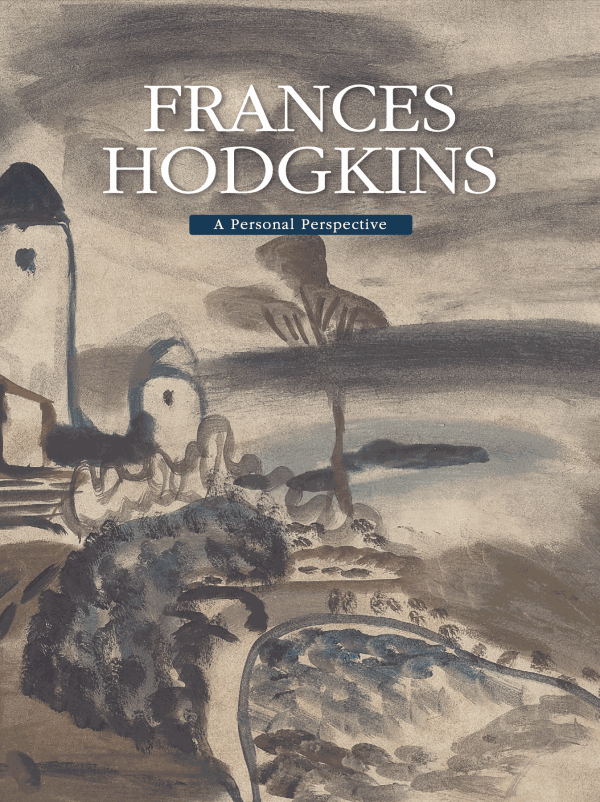
Frances Hodgkins: A Personal Perspective
Mary Kisler, Jonathan Gooderham & Kaitlin Stewart, 2022Softback, 42 pagesRead more
ISBN: 978-0-473-65712-3
Dimensions: 31 x 20 cm







